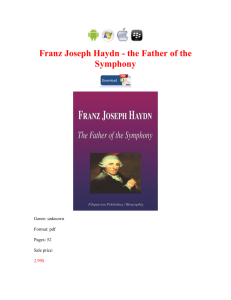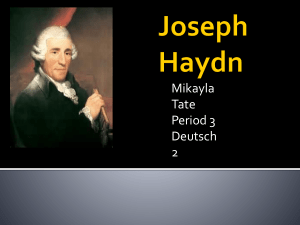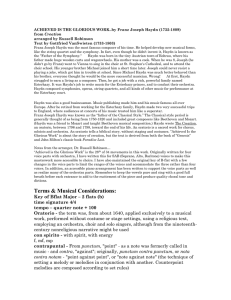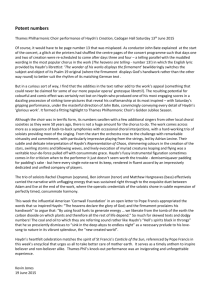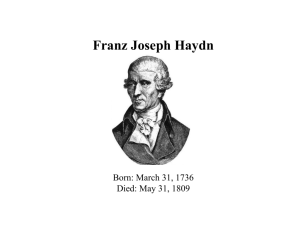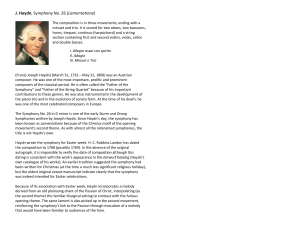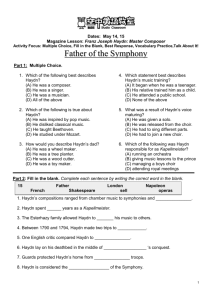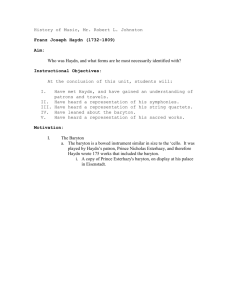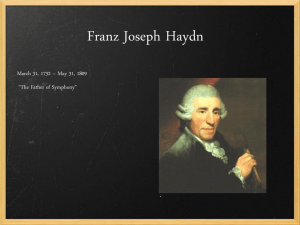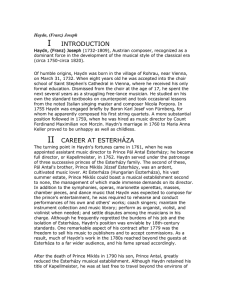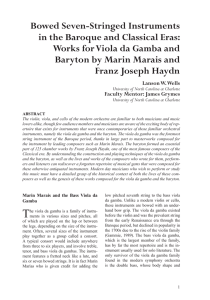MUSIC LITERACY FACT SHEET
advertisement
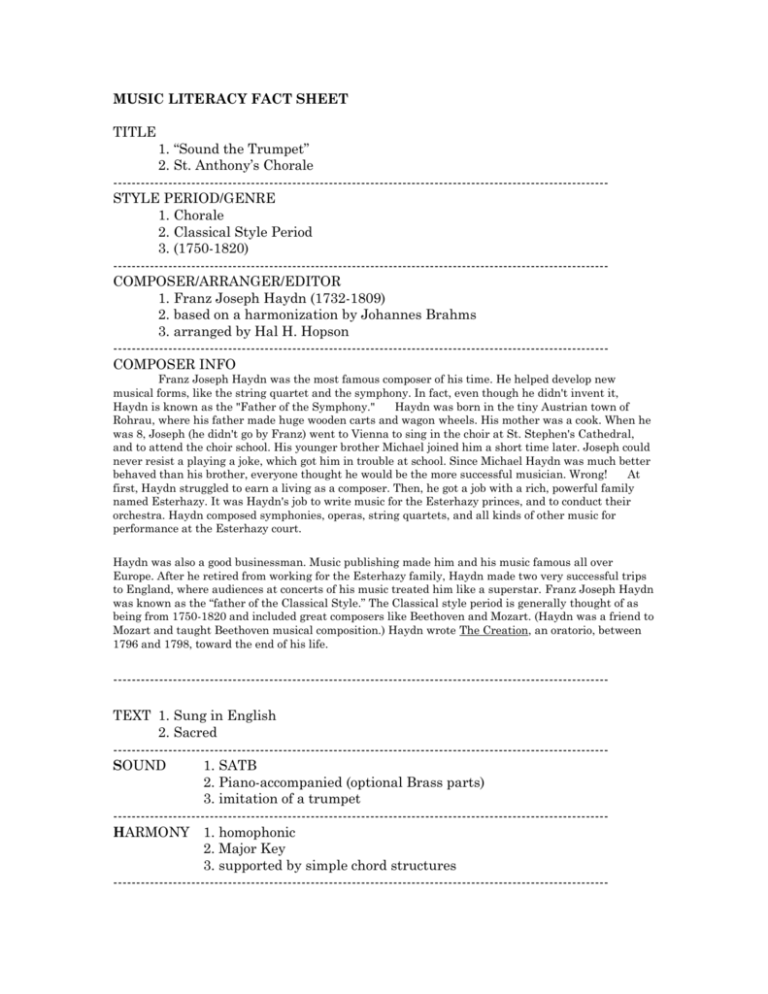
MUSIC LITERACY FACT SHEET TITLE 1. “Sound the Trumpet” 2. St. Anthony’s Chorale -----------------------------------------------------------------------------------------------------------STYLE PERIOD/GENRE 1. Chorale 2. Classical Style Period 3. (1750-1820) -----------------------------------------------------------------------------------------------------------COMPOSER/ARRANGER/EDITOR 1. Franz Joseph Haydn (1732-1809) 2. based on a harmonization by Johannes Brahms 3. arranged by Hal H. Hopson -----------------------------------------------------------------------------------------------------------COMPOSER INFO Franz Joseph Haydn was the most famous composer of his time. He helped develop new musical forms, like the string quartet and the symphony. In fact, even though he didn't invent it, Haydn is known as the "Father of the Symphony." Haydn was born in the tiny Austrian town of Rohrau, where his father made huge wooden carts and wagon wheels. His mother was a cook. When he was 8, Joseph (he didn't go by Franz) went to Vienna to sing in the choir at St. Stephen's Cathedral, and to attend the choir school. His younger brother Michael joined him a short time later. Joseph could never resist a playing a joke, which got him in trouble at school. Since Michael Haydn was much better behaved than his brother, everyone thought he would be the more successful musician. Wrong! At first, Haydn struggled to earn a living as a composer. Then, he got a job with a rich, powerful family named Esterhazy. It was Haydn's job to write music for the Esterhazy princes, and to conduct their orchestra. Haydn composed symphonies, operas, string quartets, and all kinds of other music for performance at the Esterhazy court. Haydn was also a good businessman. Music publishing made him and his music famous all over Europe. After he retired from working for the Esterhazy family, Haydn made two very successful trips to England, where audiences at concerts of his music treated him like a superstar. Franz Joseph Haydn was known as the “father of the Classical Style.” The Classical style period is generally thought of as being from 1750-1820 and included great composers like Beethoven and Mozart. (Haydn was a friend to Mozart and taught Beethoven musical composition.) Haydn wrote The Creation, an oratorio, between 1796 and 1798, toward the end of his life. -----------------------------------------------------------------------------------------------------------TEXT 1. Sung in English 2. Sacred -----------------------------------------------------------------------------------------------------------SOUND 1. SATB 2. Piano-accompanied (optional Brass parts) 3. imitation of a trumpet -----------------------------------------------------------------------------------------------------------HARMONY 1. homophonic 2. Major Key 3. supported by simple chord structures ------------------------------------------------------------------------------------------------------------ MELODY 1. Simple and prominent 2. Repetitious 3. Melodic imitation of a trumpet call -----------------------------------------------------------------------------------------------------------RHYTHM 1. simple 2. duple feel -----------------------------------------------------------------------------------------------------------GROWTH/FORM 1. ABA -----------------------------------------------------------------------------------------------------------TIME SIGNATURE 1. 2/4 2. Consistent Tempo 3. quarter note = ca. 76 -----------------------------------------------------------------------------------------------------------KEY SIGNATURE 1. Ab Major 2. 4 flats -----------------------------------------------------------------------------------------------------------NOTEWORTHY clear diction was an important consideration for us in this song the ascending melody line “Sun and moon and stars…” reflected the text and demanded a crescendo the descending line “Lord of earth, and Lord…” reflected the text and demanded a decrescendo. the pronunciation of the word “our” should be as in “hour” instead of “are” the pronunciation of the letter “r” in words such as “forever” should be open, rather than closed. TERMS crescendo/decrescendo – gradually get louder, gradually get softer dynamics – p (piano – soft), mp (mezzo-piano – medium soft), mf (mezzo-forte – medium loud), f (forte – loud), ff (fortissimo – very loud) rit. (ritardando) - gradually slower, retarding, to hold back, holding back, held back (gradual change of tempo), gradually delaying the tempo
